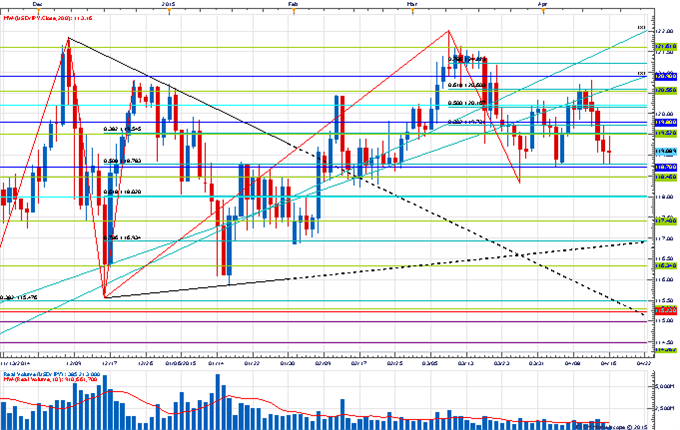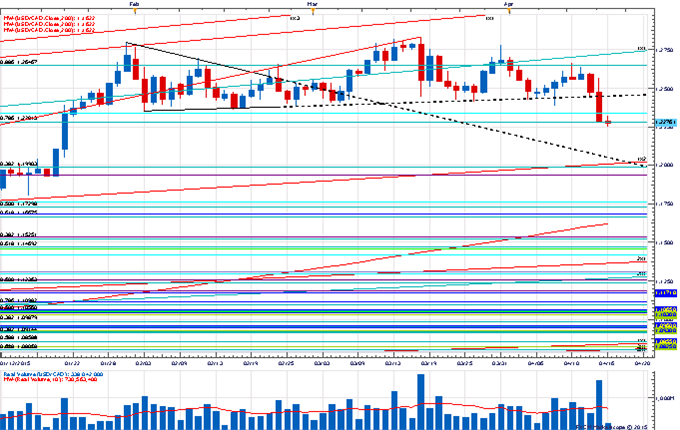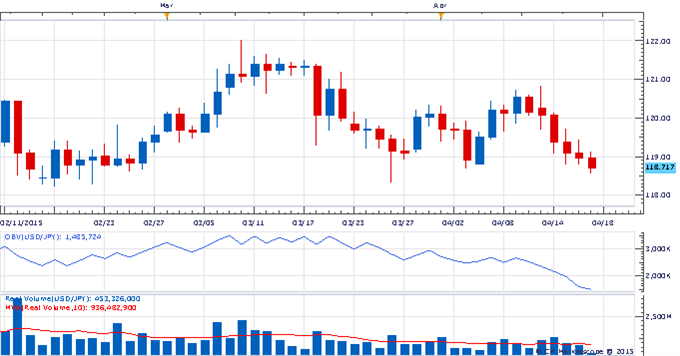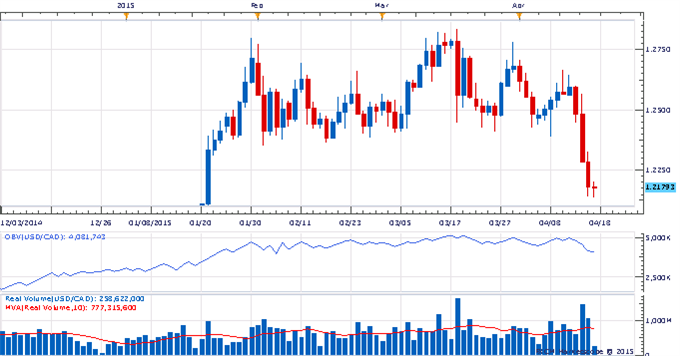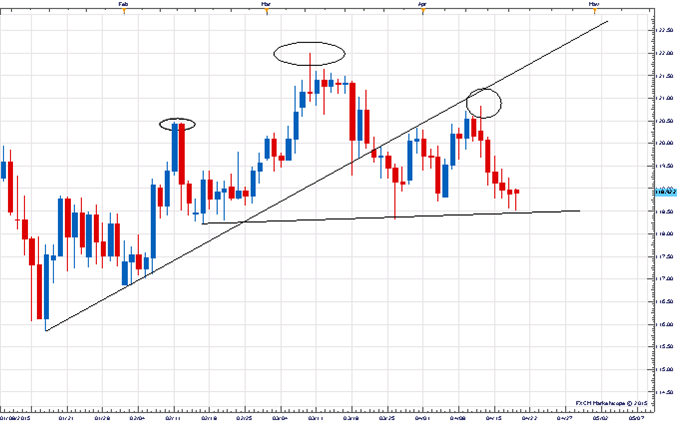For all of its numbers, charts and ratios, trading is more art than science. Just as in artistic endeavors, there is talent involved, but talent will only take you so far. The best traders hone their skills through practice and discipline. They perform self analysis to see what drives their trades and learn how to keep fear and greed out of the equation. In this article we'll look at nine steps a novice trader can use to perfect his or her craft; for the experts out there, you might just find some tips that will help you make smarter, more profitable trades, too.
TUTORIAL: Beginner's Guide To MetaTrader 4
Step 1. Define your goals and then choose a style of trading that is compatible with those goals. Be sure your personality is a match for the style of trading you choose.
Before you set out on any journey, it is imperative that you have some idea of where your destination is and how you will get there. Consequently, it is imperative that you have clear goals in mind as to what you would like to achieve; you then have to be sure that your trading method is capable of achieving these goals. Each type of trading style requires a different approach and each style has a different risk profile, which requires a different attitude and approach to trade successfully. For example, if you cannot stomach going to sleep with an open position in the market then you might consider day trading. On the other hand, if you have funds that you think will benefit from the appreciation of a trade over a period of some months, then a position trader is what you want to consider becoming. But no matter what style of trading you choose, be sure that your personality fits the style of trading you undertake. A personality mismatch will lead to stress and certain losses. (For more, see Invest With A Thesis.)
Step 2. Choose a broker with whom you feel comfortable but also one who offers a trading platform that is appropriate for your style of trading.
It is important to choose a broker who offers a trading platform that will allow you to do the analysis you require. Choosing a reputable broker is of paramount importance and spending time researching the differences between brokers will be very helpful. You must know each broker's policies and how he or she goes about making a market. For example, trading in the over-the-counter market or spot market is different from trading the exchange-driven markets. In choosing a broker, it is important to read the broker documentation. Know your broker's policies. Also make sure that your broker's trading platform is suitable for the analysis you want to do. For example, if you like to trade off of Fibonacci numbers, be sure the broker's platform can draw Fibonacci lines. A good broker with a poor platform, or a good platform with a poor broker, can be a problem. Make sure you get the best of both. (For related reading, see How To Pay Your Forex Broker.)
Step 3. Choose a methodology and then be consistent in its application.
Before you enter any market as a trader, you need to have some idea of how you will make decisions to execute your trades. You must know what information you will need in order to make the appropriate decision about whether to enter or exit a trade. Some people choose to look at the underlying fundamentals of the company or economy, and then use a chart to determine the best time to execute the trade. Others use technical analysis; as a result they will only use charts to time a trade. Remember that fundamentals drive the trend in the long term, whereas chart patterns may offer trading opportunities in the short term. Whichever methodology you choose, remember to be consistent. And be sure your methodology is adaptive. Your system should keep up with the changing dynamics of a market. (For related reading, see What is the difference between fundamental and technical analysis and Blending Technical And Fundamental Analysis.)
Step 4. Choose a longer time frame for direction analysis and a shorter time frame to time entry or exit.
Many traders get confused because of conflicting information that occurs when looking at charts in different time frames. What shows up as a buying opportunity on a weekly chart could, in fact, show up as a sell signal on an intraday chart. Therefore, if you are taking your basic trading direction from a weekly chart and using a daily chart to time entry, be sure to synchronize the two. In other words, if the weekly chart is giving you a buy signal, wait until the daily chart also confirms a buy signal. Keep your timing in sync.
Step 5. Calculate your expectancy.
Expectancy is the formula you use to determine how reliable your system is. You should go back in time and measure all your trades that were winners versus all your trades that were losers. Then determine how profitable your winning trades were versus how much your losing trades lost.
Take a look at your last 10 trades. If you haven't made actual trades yet, go back on your chart to where your system would have indicated that you should enter and exit a trade. Determine if you would have made a profit or a loss. Write these results down. Total all your winning trades and divide the answer by the number of winning trades you made. Here is the formula:
E= [1+ (W/L)] x P – 1
where:
W = Average Winning Trade
L = Average Losing Trade
P = Percentage Win Ratio
Example:
If you made 10 trades and six of them were winning trades and four were losing trades, your percentage win ratio would be 6/10 or 60%. If your six trades made $2,400, then your average win would be $2,400/6 = $400. If your losses were $1,200, then your average loss would be $1,200/4 = $300. Apply these results to the formula and you get; E= [1+ (400/300)] x 0.6 - 1 = 0.40 or 40%. A positive 40% expectancy means that your system will return you 40 cents per dollar over the long term.
Step 6. Focus on your trades and learn to love small losses.
Once you have funded your account, the most important thing to remember is that your money is at risk. Therefore, your money should not be needed for living or to pay bills etc. Consider your trading money as if it were vacation money. Once the vacation is over your money is spent. Have the same attitude toward trading. This will psychologically prepare you to accept small losses, which is key to managing your risk. By focusing on your trades and accepting small losses rather than constantly counting your equity, you will be much more successful.
Secondly, only leverage your trades to a maximum risk of 2% of your total funds. In other words, if you have $10,000 in your trading account, never let any trade lose more than 2% of the account value, or $200. If your stops are farther away than 2% of your account, trade shorter time frames or decrease the leverage. (For further reading, see Leverage's Double-Edged Sword Need Not Cut Deep.)
Step 7. Build positive feedback loops.
A positive feedback loop is created as a result of a well-executed trade in accordance with your plan. When you plan a trade and then execute it well, you form a positive feedback pattern. Success breeds success, which in turn breeds confidence - especially if the trade is profitable. Even if you take a small loss but do so in accordance with a planned trade, then you will be building a positive feedback loop.
Step 8. Perform weekend analysis.
It is always good to prepare in advance. On the weekend, when the markets are closed, study weekly charts to look for patterns or news that could affect your trade. Perhaps a pattern is making a double top and the pundits and the news are suggesting a market reversal. This is a kind of reflexivity where the pattern could be prompting the pundits while the pundits are reinforcing the pattern. Or the pundits may be telling you that the market is about to explode. Perhaps these are pundits hoping to lure you into the market so that they can sell their positions on increased liquidity. These are the kinds of actions to look for to help you formulate your upcoming trading week. In the cool light of objectivity, you will make your best plans. Wait for your setups and learn to be patient. (For information on determining what the market's telling you, read Listen To The Market, Not Its Pundits.)
If the market does not reach your point of entry, learn to sit on your hands. You might have to wait for the opportunity longer than you anticipated. If you miss a trade, remember that there will always be another. If you have patience and discipline you can become a good trader. (To learn more, see Patience Is A Trader's Virtue.)
Step 9. Keep a printed record.
Keeping a printed record is one of the best learning tools a trader can have. Print out a chart and list all the reasons for the trade, including the fundamentals that sway your decisions. Mark the chart with your entry and your exit points. Make any relevant comments on the chart. File this record so you can refer to it over and over again. Note the emotional reasons for taking action. Did you panic? Were you too greedy? Were you full of anxiety? Note all these feelings on your record. It is only when you can objectify your trades that you will develop the mental control and discipline to execute according to your system instead of your habits.
Bottom Line
The steps above will lead you to a structured approach to trading and in return should help you become a more refined trader. Trading is an art and the only way to become increasingly proficient is through consistent and disciplined practice. Remember the expression: the harder you practice the luckier you'll get.
Read more: http://www.investopedia.com/articles/forex/08/successful-trader-traits.asp#ixzz3XukgmuA9
Follow us: @Investopedia on Twitter
